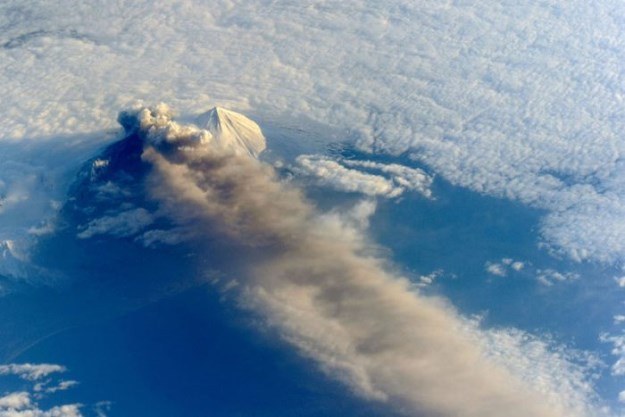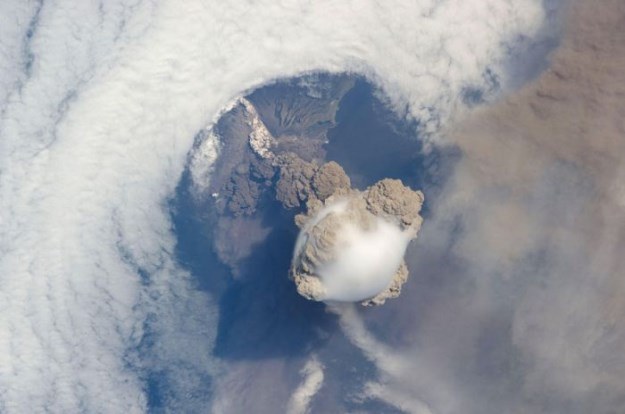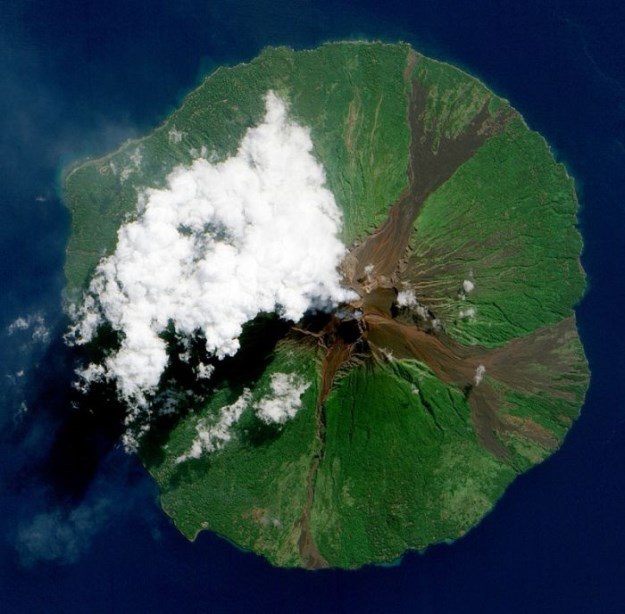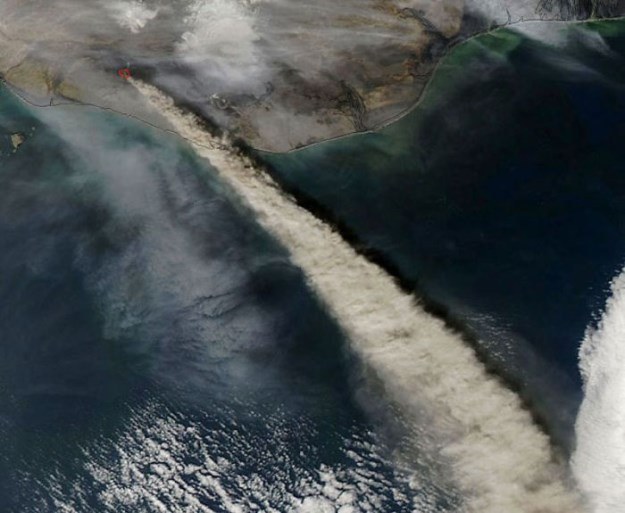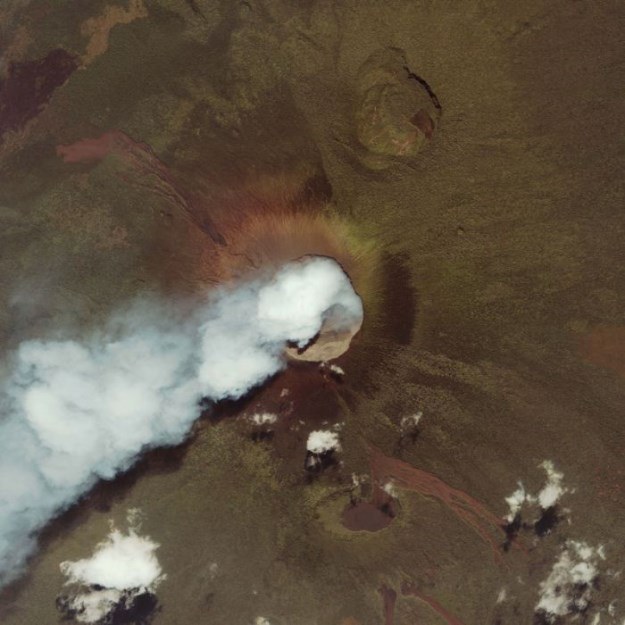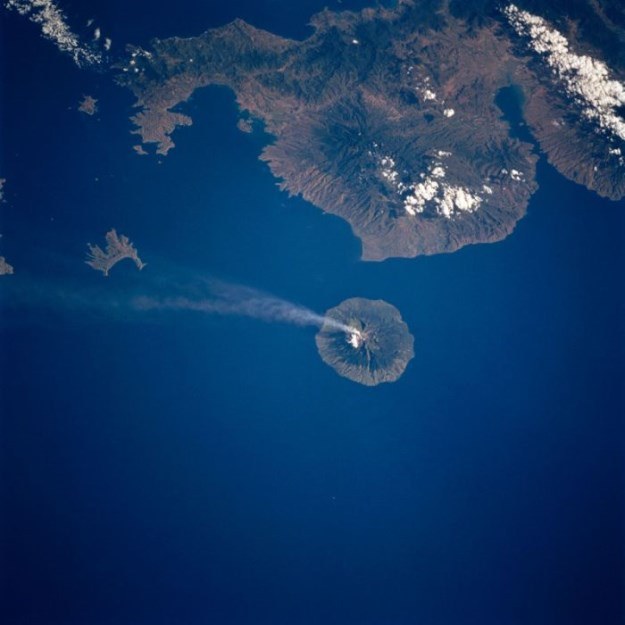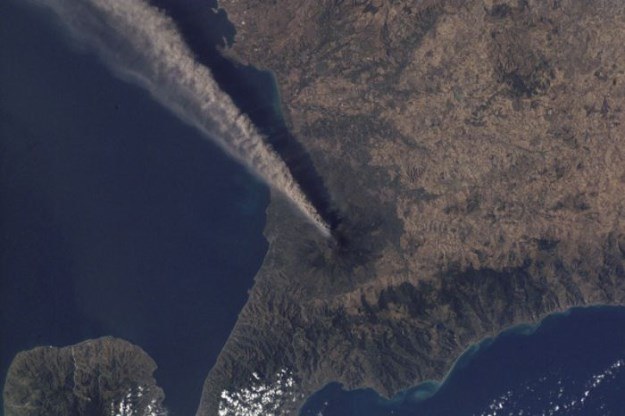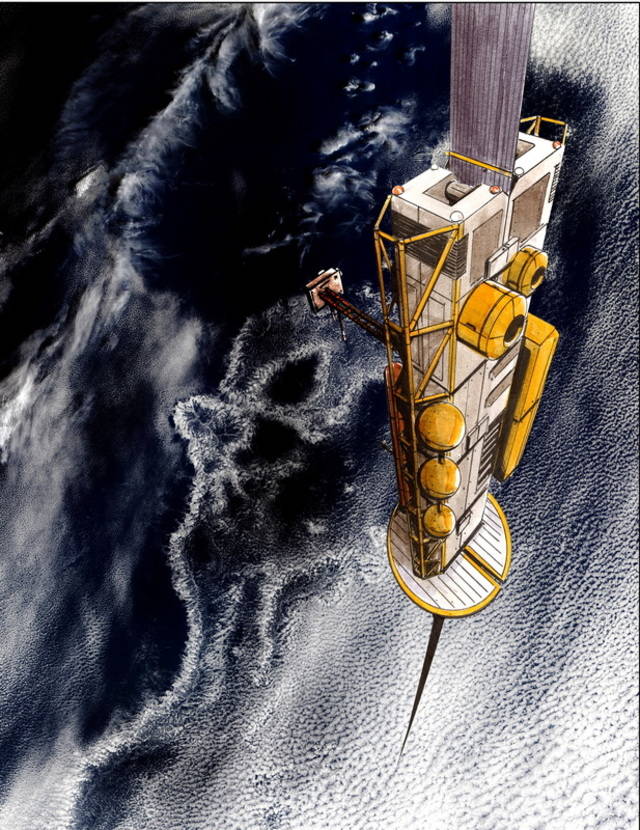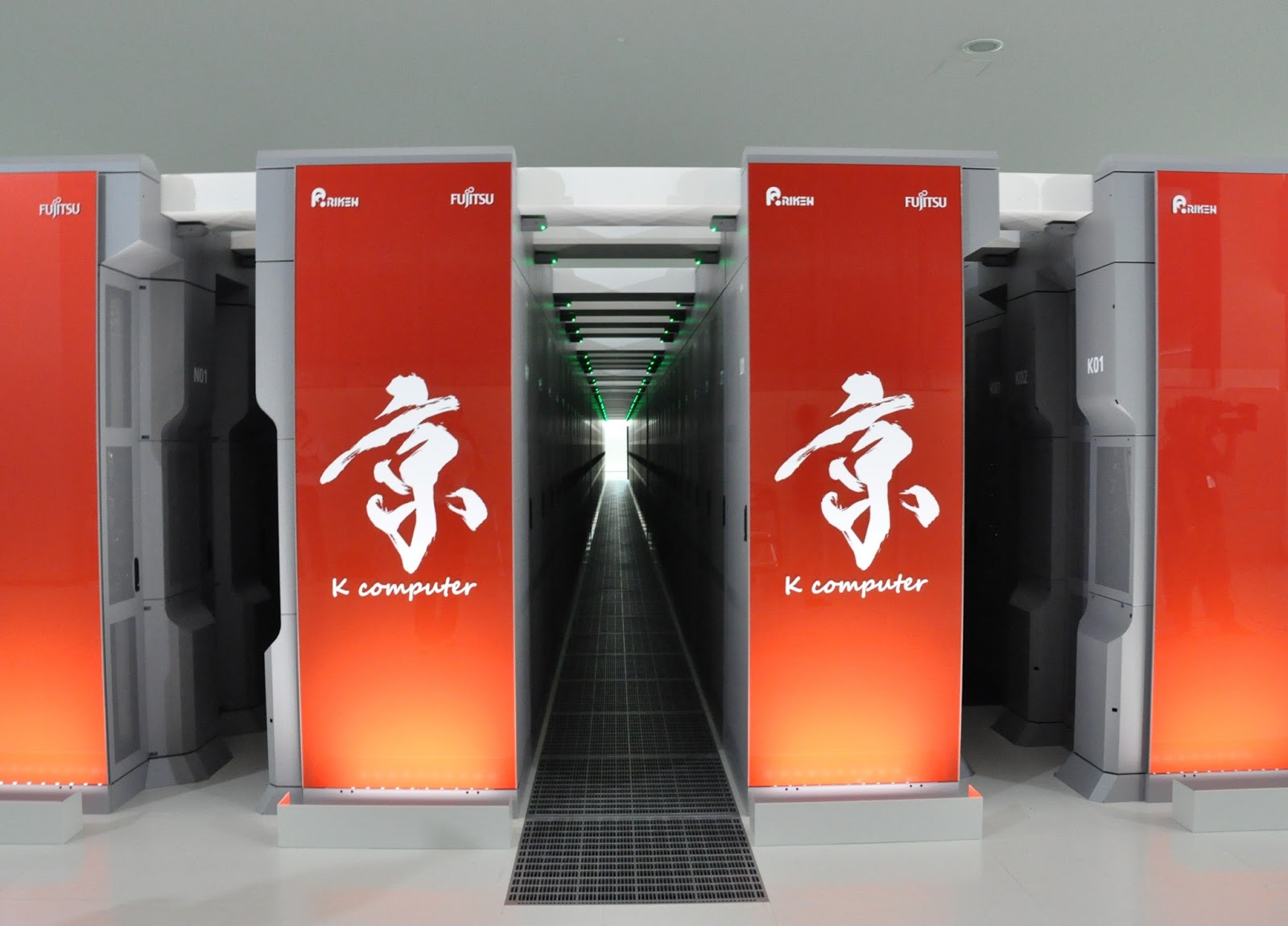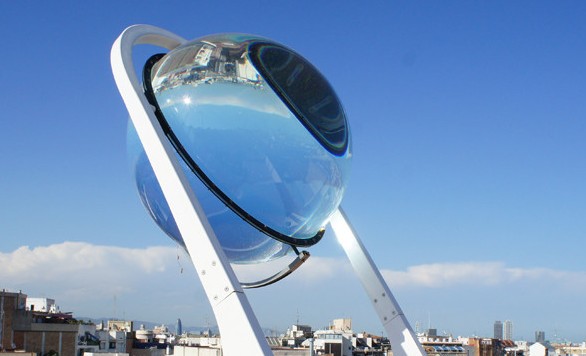If you want to watch a volcano erupt, it’s probably the safest, and possibly also the most beautiful of all ways, to watch if from a satellite in space, or simply wait till NASA release the pictures.
Mount Pavlof, Alaska
One of the most active in the United States since 1980, with eruptions recorded in 1980, 1981, 1983, 1986–1988, 1996–1997, August 15, 2007 to September 13, and beginning May 13, 2013.
Sarychev Peak, Russia
A stratovolcano ( a tall, conical volcano built up by many layers (strata) of hardened lava, tephra, pumice, and volcanic ash. Unlike shield volcanoes, stratovolcanoes are characterized by a steep profile and periodic explosive eruptions and quiet eruptions, although there are some with collapsed craters called calderas) covering almost the entirety of Matua Island in the Kuril Islands. The Volcano erupted back in June 2009, disturbing air traffic in East Asia and with North America.
Manam Volcano, Papua New Guinea
On the island of Manam, reated by the activity of the Manam Volcano, one of the country’s most active. It was inhabited until 2004, but it is now abandoned and its residents resettled elsewhere in Papua New Guinea. n November 2004, a major eruption forced the emergency evacuation of over 9,000 inhabitants of the island. The eruption began October 24 but was not seen as a major threat until the wind changed pushing ash and debris towards inhabited areas. Five people died during the eruption. On December 11, the threat was downgraded due to a reduction in activity.
Eyjafjallajökull, Iceland
A volcano completely covered by an ice cap, famously erupting in 2010, requiring 800 people to be evacuated. It led to air travel disruption in northwest Europe for six days from 15 April to 21 of April and also in May 2010, including the closure of air space all across Europe.
Mount Nyiragongo, Democratic Repulbic of Congo
An on-going threat, with localized carbon monoxide toxicity, known locally as ‘mazuku’ causing death among children. In locations where the gas seeps from the ground in relatively high levels, without the dispersing effects of wind, its effects can be deadly. It last erupted in 2002, killing 147 people, dying from asphyxiation by carbon dioxide and buildings collapsing due to the lava and earthquakes. The eruption was the most destructive effusive eruption in modern history.
Sangeang Api, Indonesia
An active complex volcano on the island of Sangeang in Indonesia, consisting of two volcano cones. t erupted in 1988 and the island’s inhabitants were evacuated. Between its first recorded eruption in 1512 and 1989 it erupted 17 times. It erupted again during December 2012.
Mount Etna, Italy
The tallest active volcano on the European continent, currently standing 3,329 m (10,922 ft) high. In Greek Mythology, the deadly monster Typhon was trapped under this mountain by Zeus, the god of the sky and thunder and king of gods, and the forges of Hephaestus were said to also be located underneath it. Due to its history of recent activity and nearby population, Mount Etna has been designated a Decade Volcano by the United Nations. In June 2013, it was added to the list of UNESCO World Heritage Sites. Through January 2011 to February 2012, the summit craters of Etna were the site of intense activity. Frequent eruptions and ash columns forced the authorities to shut down the Catania airport on several occasions, endangering the Sapienza Refuge, the main tourist hub on the volcano, but the lava flow was successfully diverted.

